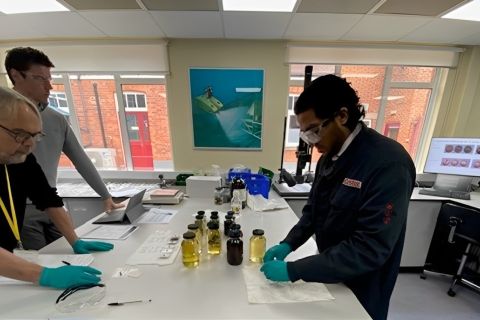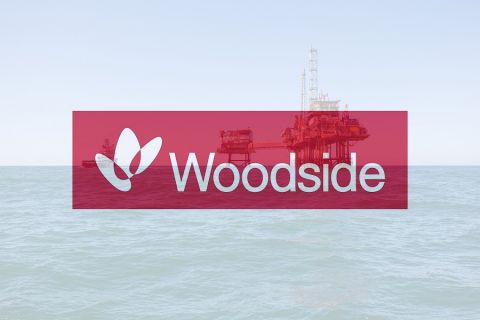The run-up in oilfield service and supply stocks seen at the end of 2003 is widely expected to continue into 2004 as activity increases worldwide, according to Wall Street analysts. Oil-service stocks ended the year strong, gaining more than 10% in December, notes Kurt Hallead, an analyst with RBC Capital Markets. "We are confident the rally will continue along a bumpy path into [the first half of 2004]," he says. (For more forecasts for oil-service stocks in 2004, see "Street-Wise Service Buys" in this issue.) Hallead forecasts a 7% to 10% increase in U.S. land activity over 2003, an incremental five to 10 rigs to be added to the deepwater Gulf of Mexico, an incremental four to six rigs in West Africa starting in the second quarter, and a strong pick-up in North Sea drilling as independents probe the basin. "We would use any correction as a buying opportunity given our view that the OSX [Philadelphia Oil Service Index] is in the second stage of a three-stage rally," he says. Stage 1 was driven by value investors. Stage 2 is being driven by chart momentum, and Stage 3 will be a function of earnings momentum, he adds. Marshall Adkins, an analyst with Raymond James & Associates, believes the OSX could gain up to 40% in 2004. Adkins is much more bullish on oil and gas prices than many other analysts-his 2004 average gas-price forecast is $5.50 per thousand cubic feet versus a consensus of $4.63, and his oil-price forecast is $30 a barrel, versus a consensus of $25.34. He believes investors in 2004 will conclude that high commodity prices are sustainable, and that many E&P and oil-service companies are trading at deep discounts to their intrinsic value. Adkins favors those companies closest to the drillbit, such as his Strong Buy-rated land drillers, tubular companies and component manufacturers. A gas price of just $4.50 would be sufficient to spur E&P activity and lead oil-service stocks higher, says James K. Wicklund, an analyst with Banc of America Securities. "Investors should more broadly understand that higher levels of drilling are required to balance supply and demand, and high natural gas prices are required for that. And $4.50 per thousand cubic feet is high enough right now," he says. "Investors that have avoided the group [in 2003] due to the extreme volatility of commodity prices should increasingly believe that the trend underlying this volatility is positive and secular in nature, and that the cycles of activity could be getting longer." Wicklund forecasts the U.S. rig count in 2004 to average 1,145 rigs, or 11% higher than in 2003. He believes jackups in the Gulf of Mexico should fetch higher dayrates-he is expecting premium jackups to average $48,000 per day in 2004, up from $34,500 in 2003, and commodity jackups to average $29,500 versus $20,800 in 2003. Internationally, he forecasts an 8% increase in drilling activity, to 832 rigs in 2004. The most important factor to the stock market will be domestic drilling, he adds. "...Our analysis shows that if the U.S. drilling activity is not up, the stocks don't work." He expects stocks with significant North American gas exposure to lead in performance, and is avoiding stocks associated with boats, helicopters, seismic companies and offshore construction companies. Early indications, at least anecdotally, are that 2004 should start strong. "Discussions with several oil company personnel indicate they will hit the ground running in 2004 since not all the drilling planned for 2003 was completed, and only an early start would ensure completion of programs," Wicklund says. Grant Borbridge, an analyst with Prudential Equity Group, says the U.S. land rig count should experience moderate gains through the first half of 2004. Total land drilling permits issued in 2003 were 22% higher than in 2002. In the Gulf of Mexico, Borbridge expects a gradual increase in activity. An average of 17 permits per week were issued in the second half of 2003, compared with an average 14.5 permits per week in the first half. This should translate into more activity in the first half of 2004, he says. Internationally, Borbridge expects continued strength in land and shallow-water activity, but additional weakness in the offshore floater-rig market. "As 2004 progresses, we expect incremental demand in West Africa and India to absorb much of the resulting deepwater availability," he says. "However, there is no such solution in sight for midwater markets, especially the Gulf of Mexico and North Sea, which we expect to be weak through 2004." There are four companies in his universe that are, on average, 16% under his target price, and present attractive buying opportunities, he says: Ensco International, Patterson-UTI Energy, Transocean and Weatherford. Wicklund says Patterson-UTI and Nabors Industries tend to outperform all other industry segments through upcycles. Next best are midcaps such as Smith International and BJ Services. Top small-caps are Varco International and FMC Technologies. Hallead's growth picks include Baker Hughes, Schlumberger, BJ Services, Smith International, Nabors, Ensco, Patterson-UTI and Rowan. His value picks include Noble Corp., Precision Drilling, FMC Technologies and Oil States International. Both Wicklund and Hallead listed Halliburton as a "special situation" pick.
Recommended Reading
Electric Hype vs. Hydraulic Reality: Advantages of Traditional Systems
2024-05-07 - Castrol's new fluid prevents gas hydrates in deepwater control systems.
E&P Highlights: May 6, 2024
2024-05-06 - Here’s a roundup of the latest E&P headlines, including technology milestones and new contract awards.
US Oil, Gas Rig Count Falls to Lowest Since January 2022
2024-05-03 - The oil and gas rig count, an early indicator of future output, fell by eight to 605 in the week to May 3, in the biggest weekly decline since September 2023.
Pemex Reports Lower 2Q Production, Net Income
2024-05-03 - Mexico’s Pemex reported both lower oil and gas production and a 91% drop in net income in first-quarter 2024, but the company also reduced its total debt to $101.5 billion, executives said during an earnings webcast with analysts.
Woodside’s GoM Trion Project Wins Social Impact Assessment Approval
2024-02-14 - Woodside Energy’s Trion is expected to start production in the Mexican sector of the Gulf of Mexico in 2028, and Woodside said the impact assessment will help the operator engage with local communities during the construction phase.




